Ancient Egyptian Gods and Goddesses
2:24 PM
Old Egyptian Gods and Goddesses
For all antiquated individuals, the world was loaded with puzzle. Quite a bit of what they encountered in their general surroundings was mysterious and startling. The old Egyptian divine beings and goddesses spoke to parts of the Egyptians' characteristic and "powerful" environment and helped them comprehend its numerous perspectives.
Demons
Demons were more intense than individuals yet not as capable as divine beings. They were normally undying, could be in more than one place at any given moment, and could influence the world and in addition individuals in powerful ways. Be that as it may, there were sure points of confinement to their forces and they were neither all-capable nor all knowing. Among evil spirits the most imperative figure was Ammut – the Devourer of the Dead – part crocodile, part lioness, and part hippopotamus. She was frequently appeared close to the scales on which the hearts of the dead were weighed against the quill of Truth. She ate up the hearts of those whose evil deeds in life made them unfit to enter existence in the wake of death. Apepi, another essential evil spirit, (once in a while called Apophis) was the foe of the sun god in his day by day push through the universe, and is portrayed as a goliath wind.
Gods and Goddesses
Most Egyptian divine beings spoke to one guideline part of the world: Ra was the sun god, for instance, and Nut was goddess of the sky. The characters of the divine beings were not obviously characterized. Most were for the most part generous however their support couldn't be depended on. A few divine beings were angry and must be assuaged. A few, for example, Neith, Sekhmet, and Mut, had variable characters. The god Seth, who killed his sibling Osiris, typified the noxious and cluttered parts of the world.
The physical frame gone up against by the different Egyptian divine beings was generally a mix of human and creature, and many were related with at least one creature animal categories. What's more, a creature could express a divinity's state of mind. At the point when a divine being was irate, she may be depicted as a fierce lioness; when tender, a feline. The tradition was to delineate the creature divine beings with a human body and a creature head. The inverse tradition was some of the time utilized for portrayals of a lord, who may be depicted with a human head and a lion's body, as on account of the Sphinx. Sphinxes may likewise show up with different heads, especially those of rams or hawks.
Numerous gods were spoken to just in human frame. Among these were such extremely old figures as the inestimable divine beings Shu of the air, Geb of the earth, the ripeness god Min, and the skilled worker Ptah. There were various minor divine beings that went up against odd structures, including Bes, a midget with a cover like face, and Taurt, a goddess whose physical frame joined the components of a hippopotamus and a crocodile.
Nut, Shu and Geb
Nut was the mother of Osiris, Isis, Seth, and Nephythys, Nut is generally appeared in human shape; her extended body symbolizing the sky. Every appendage speaks to a cardinal point as her body extends over the earth. Nut gulped the setting sun (Ra) each night and brought forth him every morning. She is frequently portrayed on the roofs of tombs, within top of boxes, and on the roofs of sanctuaries.
Shu was the spouse of Tefnut and the father of Nut and Geb. He and his significant other were the principal divine beings made by Atum. Shu was the divine force of the air and daylight or, all the more definitely, dry air and his better half spoke to dampness. He was typically portrayed as a man wearing a hat as a crest, which is additionally the pictograph for his name.
Shu's capacity was to hold up the body of the goddess Nun and separate the sky from the earth. He was not a sun powered divinity but rather his part in giving daylight associated him to Ra. To be sure, he was one of only a handful couple of divine beings who got away abuse under the blasphemer lord Akhenaten.
Geb was the father of Osiris, Isis, Seth, and Nephythys, and was a divine being without a clique. As an Earth god he was related with richness and it was trusted that seismic tremors were the chuckling of Geb. He is specified in the Pyramid Texts as detaining the covered dead inside his body.
Amun
Otherwise called Amen, Amun, Ammon
Amun was the central Theban god whose power developed as the city of Thebes developed from an insignificant town, in the old Kingdom, to a capable city in the Middle and New Kingdoms. He rose to end up distinctly the benefactor of the Theban pharaohs and was in the long run consolidated with sun god, Ra who had been the overwhelming divinity of the Old Kingdom to end up Amun-Ra, King of the Gods and leader of the Great Ennead.
Amun's name signifies "Shrouded One, Mysterious of Form," and despite the fact that he is frequently spoken to as a human wearing a twofold plumed crown, he is here and there delineated as a smash or a goose. The suggestion is that his actual personality can never be uncovered.
Karnak was Amun's main sanctuary, however his notoriety expanded well past the limits of Egypt. His religion spread to Ethiopia, Nubia, Libya, and through a lot of Palestine. The Greeks thought he was an Egyptian appearance of their god Zeus. Significantly Alexander the Great thought it beneficial counseling the prophet of Amun.
Anubis
Defender of the Dead
Anubis is appeared as a jackal-headed man, or as a jackal. His dad was Seth and his mom Nephythys. His faction focus was Cynopolis, now known as El Kes. He was nearly connected with preservation and as defender of the dead. It was Anubis who directed the perished to the corridor of judgment.
Bastet
Bastet is delineated as a lady with a feline's head or basically as a feline. Initially an avenging lioness god, she advanced into a goddess of joy.
Her faction focus was in the town of Bubastis in the Western delta. Many felines inhabited her sanctuary and were embalmed when they passed on. A tremendous graveyard of embalmed felines has been found in the region.
Bes
Not at all like alternate divine beings, Bes is spoken to full face instead of in profile, as an abnormal, bandy-legged, predominate with his tongue standing out. He was related with great circumstances and diversion, but at the same time was viewed as a
watchman divine force of labor. Bes pursued away evil spirits of the night and monitored individuals from perilous creatures.
Hapi
Hapi was not the divine force of the waterway Nile but rather of its immersion. He is spoken to as a pot-bellied man with bosoms and a hat made of oceanic plants. He was thought to live in the caverns of the principal waterfall, and his clique focus was at Aswan.
Hathor
Hathor was the girl of Ra and the benefactor goddess of ladies, love, excellence, delight, and music. She is portrayed in three structures; as a bovine, as a lady with the ears of a cow, and as a lady wearing the crown of a dairy animals' horns. In this last sign, she holds the sun oriented plate between her horns. She was the partner of Horus, and her name really signifies "Place of Horus." She had numerous sanctuaries the most renowned of which is at Dendara.
There was a dull side to Hathor. It was trusted that Ra sent her to rebuff mankind for its fiendishness, however Hathor wreaked such ridiculous devastation on earth that Ra was appalled and resolved to bring her back. He deceived her by get ready boundless amounts of brew blended with mandrake and the blood of the killed. Killing humankind was parched work, and when Hathor drank the brew she turned out to be intoxicated to the point that she couldn't proceed with her butcher.
Horus
Horus was the child of Osiris and Isis and the foe of the evil God Seth. He is delineated as a sell or as a man with the leader of a peddle. Once in a while he is appeared as an adolescent with a side bolt, situated on his mom's lap. He was the lord of the sky and the celestial defender of rulers.
Horus was loved all through Egypt and was especially connected with Edfu, the site of the old city of Mesen, where his sanctuary can at present be seen.
There are numerous stories of his wars against his uncle Seth, who killed his dad and usurped the position of royalty. Inevitably Horus crushed Seth and turned into the lord of Egypt.
Isis
An essential figure in the antiquated world, Isis was the spouse of Osiris and mother of Horus. She was related with memorial service rituals and said to have made the primary mummy from the dismantled parts of Osiris. As the sorcerer who restored Osiris and brought forth Horus, she was likewise the supplier of life, a healer and defender of lords.
Isis is spoken to with a royal position on her head and once in a while demonstrated breastfeeding the newborn child Horus. In this sign she was known as "Mother of God." To the Egyptians she spoke to the perfect spouse and mother; cherishing, committed, and minding.
Her most popular sanctuary is at Philae however her religion spread all through the Medi-terranean world and, amid the Roman time frame, reached out similar to northern Europe. There was even a sanctuary devoted to her in London.
Khepre
Otherwise called, Khepri, Khepra, Khepera, Khepre was a maker god delineated as a Scarab insect or as a man with a scarab for a head. The Egyptians watched youthful scarab insects rising suddenly from chunks of excrement and related them with the procedure of creation. Khepre was one of the primary divine beings, self-made, and his name signifies "he who has appeared," Atum took his frame as he rose out of the tumultuous waters of the Nun in a creation myth. It was suspected that Khepre rolled the sun over the sky similarly a compost bug moves chunks of excrement over the ground.
Khnum
Khnum, was portrayed as a smash headed man. He was a lord of the waterfalls, a potter, and a maker god who protected the wellspring of the Nile,. His asylum was on Elephantine Island yet his best-protected sanctuary is at Esna. The "Starvation Stele", which is a cut stone tablet, contains claims to Khnum amid a starvation brought on by a low immersion of the Nile.
Khonsu
Otherwise called Khons Khensu, Khuns
Khonsu was the child of Amun and Mut, with whom he framed the Theban group of three. He was a moon god portrayed as a man with a hawk head wearing a sickle moon hood surmounted by the full lunar circle. Like Thoth, who was likewise a lunar divinity, he is some of the time spoke to as a monkey. Khonsu was accepted to be able to drive out abhorrence spirits. Rameses II sent a statue of Khonsu to a well disposed Syrian lord keeping in mind the end goal to cure his little girl of a disease.
His sanctuary was inside the regions of Karnak.
Ma'at
Ma'at was the goddess of truth and equity, exemplifying the basic congruity of the universe. She was delineated as a situated lady wearing an ostrich quill, or now and again similarly as the plume itself. Her energy directed the seasons and the development of the stars. Ma'at was the benefactor of equity and the image of antiquated Egyptian morals, so the Vizier who was accountable for the Law Courts passed by the title Priest of Maat.
Ma'at was a definitive judge in existence in the wake of death, and the heart of the recently expired was weighed against her quill in the Hall of Two Truths. Ammut, devourer of the dead, ate the individuals who fizzled her test.
Montu
Montu was a warrior god who rose to wind up distinctly the state god amid the eleventh administration. He was related with lord Montuhotep I ("Montu is fulfilled"), who rejoined Upper and Lower Egypt after the turmoil of the First Intermediate Period.
Amid the Twelfth Dynasty Montu was dislodged by the ascent of Amun, yet he went up against the genuine properties of a war god when warrior rulers, for example, Thutmose III and Rameses II recognized themselves with him.
Mut
Mut shaped some portion of the Theban Triad. She was one of the little girls of Ra, the spouse of Amun, and mother of Khonsu. She was the Vulture goddess and is frequently portrayed as a lady with a long, brilliantly hued dress and a vulture hood surmounted by the twofold crown. In her more forceful perspective she is appeared as a lion-headed goddess.
Like Isis and Hathor, Mut assumed the part of awesome mother to the ruler. Her talismans, which delineate her as a situated lady suckling a kid, are at some point mistook for those of Isis.
Nephythys
Little girl of Geb and Nut, sister of Isis, spouse of Seth and mother of Anubis, Nephythys is delineated as a lady with the symbolic representations for a royal residence and "Neb" (a bushel) on her head. She is along these lines known as "Woman of the Mansions" or "Royal residence." Nephythys was nauseated by Seth's murder of Osiris and helped her sister, Isis, against her significant other, Seth. Together with Isis she was a defender of the dead, and they are regularly demonstrated together on box cases, with winged arms. She appears to have had no sanctuary or clique focus of her own.
Osiris
Osiris was initially a vegetation god connected with the development of products. He was the fanciful first ruler of Egypt and a standout amongst the most imperative of the divine beings. It was imagined that he conveyed human progress to the race of humankind. He was killed by his sibling Seth, breathed life into back by his better half Isis, and went ahead to end up distinctly the leader of the black market and judge of the dead.
He is generally delineated as a mummy holding the hoodlum and thrash of authority. On his head he wears the white crown of Upper Egypt flanked by two crest of plumes. Once in a while he is appeared with the horns of a smash. His skin is portrayed as blue, the shade of the dead; dark, the shade of the rich earth; or green, speaking to restoration.
Egyptian HieroglyphsOsiris' head was thought to have been covered at Abydos, his principle clique focus. Every year, amid his celebration, there was a parade and a reenactment of his story as a riddle play.
Ptah
Ptah was a maker god, said to have made the world from the considerations in his heart and his words. He was delineated as a mummy with his hands distending from the wrappings and holding a staff. His head was shaven and he wore a scull top. Ptah was related with skilled workers, and the High Priest of his sanctuary at Memphis held the title Great Leader of Craftsmen.
Ra
Otherwise called Re
The incomparable sun god was spoken to as a man with the leader of a sell, delegated with a sun powered circle and the holy serpent. Be that as it may, in the black market through which he passes every night, he is portrayed as smash headed.
Every day Ra traversed the sky as the sun, riding in his sun powered pontoon, and every night he traveled through the black market where he crushed the partners of confusion. He was reawakened every morning as the dawn. His impact on alternate divine beings was strong to the point that he subsumed a hefty portion of their personalities. Along these lines Amun got to be Amun-Ra, Montu got to be Montu-Ra and Horus got to be Ra-Horakhty. Pharoah Akenaten's god, the Aten, was another type of Ra, the sun based plate.
The Egyptian lords guaranteed to be plummeted from Ra, and called themselves "The Son of Ra." His religion was effective amid the time of the Old Kingdom,when Sun Temples were implicit his respect. His faction focus was at Heliopolis, which these days is secured by the northern rural areas of Cairo.
Sobek
Sobek was a crocodile god, portrayed as a crocodile on a sacrificial table or as a man with a crocodile head wearing a hood as the sun circle with upright quills and horns. Sobek's principle religion focuses were at Medinet el Fayum and at the sanctuary of Kom Ombo, which he imparted to Horus which still exists today. There was a pool at Kom Ombo containing holy crocodiles and it is still conceivable to see unique preserved crocodiles at the sanctuary.
Seth
Otherwise called Set, Setekh, Suty and Sutekh
Seth was the child of Geb and Nut, and the malicious sibling of Osiris. He was the lord of obscurity, mayhem, and disarray, and is spoken to as a man with an obscure creature head, regularly portrayed as a Typhonian by the Greeks who related him with the god Typhon. He is now and then delineated as a hippopotamus, a pig, or a jackass. Seth killed his sibling and usurped the royal position of Egypt and the greater part of alternate divine beings detested him.
Horus in the long run crushed Seth, however it was believed that their fight was an unceasing battle amongst great and underhandedness. Despite the fact that Seth neglected to keep the royal position of Egypt he kept on being a friend of Ra. He now and then went with Ra over the sky in his sun based vessel, creating tempests and awful climate.
Seth was loved by a few, and his fundamental religion focus was at Naqada. A few rulers would compare themselves to Seth in fight, yet generally the general population detested him and his annihilation by Horus was frequently celebrated.
Tefnut
Tefnut was the spouse of Shu and mother of Nut and Geb. She and her better half were the primary divine beings made by Atum. She was the goddess of dampness or moist, destructive air, and was delineated either as a lioness or as a lady with a lioness' head.
Thoth
Thoth was the divine force of composing and learning, and was delineated as a man with the leader of an ibis holding a copyist's pen and palette, or as a mandrill. The Greeks related him with Hermes and attributed to him the creation of the considerable number of sciences and in addition the development of composing. He is regularly depicted composition or making figurings.
Thoth stands separated from the majority of alternate divine beings. He was as old as the most established divine beings and regularly went about as a transitionally between divine beings. He was related with the moon, and is now and again indicated wearing a moon circle and bow hat. One of his most vital parts was to record the deeds of the dead at the day of their judgment and is regularly observed doing this in the Book of the Dead. His fundamental sanctuary was at Hermopolis in Middle Egypt.

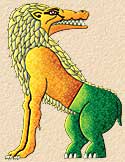
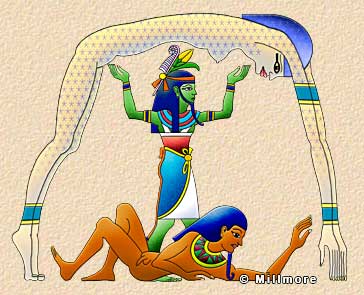
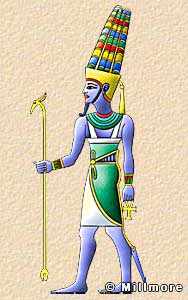


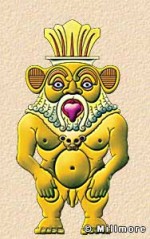
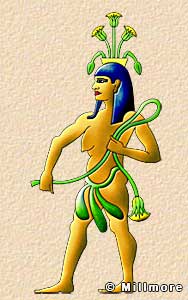

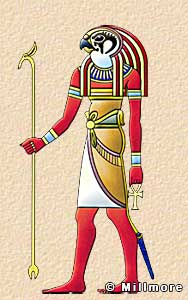
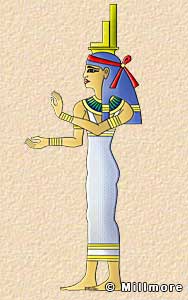
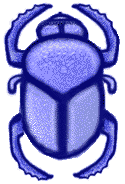
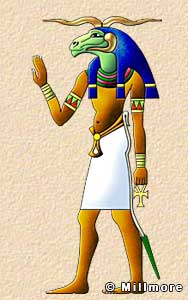
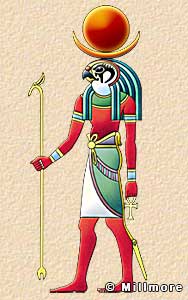
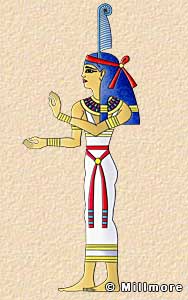

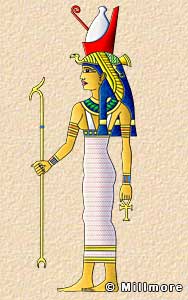
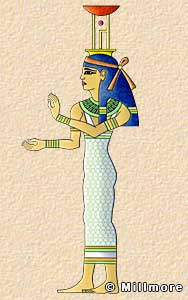
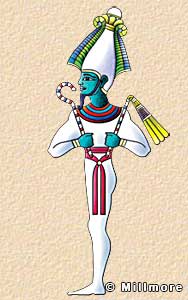
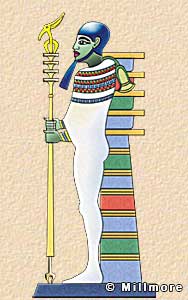
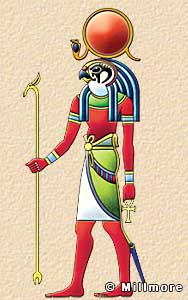

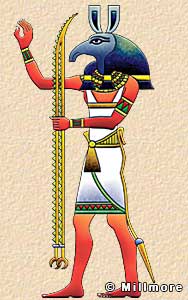
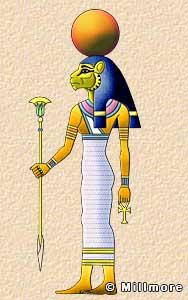
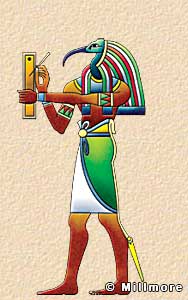
0 التعليقات